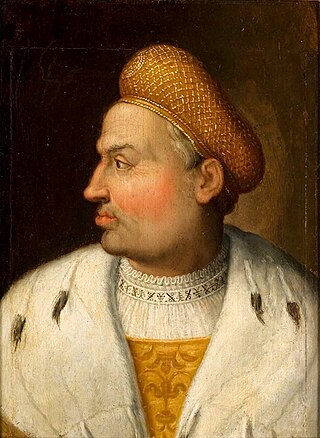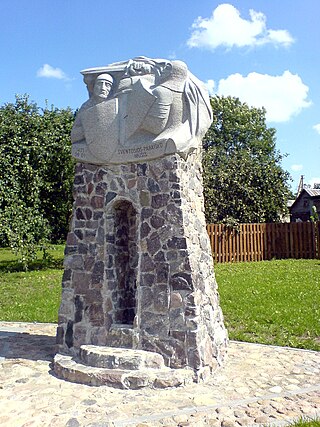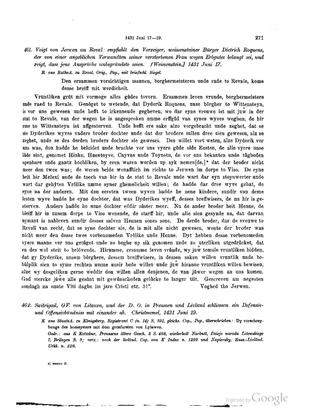
Jadwiga, also known as Hedwig, was the first woman to be crowned as monarch of the Kingdom of Poland. She reigned from 16 October 1384 until her death. She was the youngest daughter of Louis the Great, King of Hungary and Poland, and his wife, Elizabeth of Bosnia. Jadwiga was a member of the Capetian House of Anjou, but she had more close forebears among the Polish Piasts than among the Angevins.

Casimir IV was Grand Duke of Lithuania from 1440 and King of Poland from 1447 until his death in 1492. He was one of the most active Polish-Lithuanian rulers; under him, Poland defeated the Teutonic Knights in the Thirteen Years' War and recovered Pomerania.

Sigismund I the Old was King of Poland and Grand Duke of Lithuania from 1506 until his death in 1548. Sigismund I was a member of the Jagiellonian dynasty, the son of Casimir IV and younger brother of Kings John I Albert and Alexander I Jagiellon. He was nicknamed "the Old" in later historiography to distinguish him from his son and successor, Sigismund II Augustus. Before ascending to the Polish and Lithuanian thrones, he was Duke of Głogów from 1499, Duke of Opava from 1501, and governor of Silesia from 1504 on behalf of his brother, King Vladislaus II of Bohemia and Hungary.

Władysław III of Poland, also known as Ladislaus of Varna, was King of Poland and Supreme Duke of the Grand Duchy of Lithuania from 1434 as well as King of Hungary and Croatia from 1440 until his death at the Battle of Varna. He was the eldest son of Władysław II Jagiełło (Jogaila) and the Lithuanian noblewoman Sophia of Halshany.

Jogaila, later Władysław II Jagiełło, was Grand Duke of Lithuania, later giving the position to his cousin Vytautas in exchange for the title of Supreme Duke of Lithuania (1401–1434) and then King of Poland (1386–1434), first alongside his wife Jadwiga until 1399, and then sole ruler of Poland. Raised a Lithuanian polytheist, he converted to Catholicism in 1386 and was baptized as Ladislaus in Kraków, married the young Queen Jadwiga, and was crowned King of Poland as Władysław II Jagiełło. In 1387, he converted Lithuania to Catholicism. His own reign in Poland started in 1399, upon the death of Queen Jadwiga, lasted a further thirty-five years, and laid the foundation for the centuries-long Polish–Lithuanian union. He was a member of the Jagiellonian dynasty in Poland that bears his name and was previously also known as the Gediminid dynasty in the Grand Duchy of Lithuania. The dynasty ruled both states until 1572, and became one of the most influential dynasties in late medieval and early modern Europe.

The Crown of the Kingdom of Poland was a political and legal idea formed in the 14th century, assuming unity, indivisibility and continuity of the state. According to this concept, the state ceased to be the patrimonial property of the monarch or dynasty, but became a common good of the political community of the kingdom. Such an idea allowed the state to function even in periods of interregnum and led to the formation of a system characteristic of Poland based on the parliamentarism of the nobility and the free election of the ruler. At the same time, the idea of the crown went beyond existing political boundaries; lands lost in the past were considered to belong to it.

Ulrich von Jungingen was the 26th Grand Master of the Teutonic Knights, serving from 1407 to 1410. His policy of confrontation with the Grand Duchy of Lithuania and the Kingdom of Poland would spark the Polish–Lithuanian–Teutonic War and lead to disaster for his Order, and his own death, at the Battle of Grunwald.

Vytautas, also known as Vytautas the Great, was a ruler of the Grand Duchy of Lithuania. He was also the prince of Grodno (1370–1382), prince of Lutsk (1387–1389), and the postulated king of the Hussites.

Švitrigaila was the Grand Duke of Lithuania from 1430 to 1432. He spent most of his life in largely unsuccessful dynastic struggles against his cousins Vytautas and Sigismund Kęstutaitis.

The Union of Grodno was a series of acts of the Polish–Lithuanian union between Kingdom of Poland and Grand Duchy of Lithuania. The first acts were signed in 1432 during the Lithuanian Civil War of 1431–1435. The acts confirmed the Union of Vilnius and Radom (1401). The Union established Sigismund Kęstutaitis as the Grand Duke of Lithuania and re-established Władysław II Jagiełło's seniority and dynastic interest in Lithuania.

Sigismund Korybut was a duke from the Korybut dynasty, best known as a military commander of the Hussite army and a governor of Bohemia and Prague during the Hussite Wars.

Sophia of Halshany, known simply as Sonka, was princess of Halshany by birth and Queen consort of Poland as the fourth and last wife of Jogaila, King of Poland and Supreme Duke of Lithuania. As the mother to Władysław III and Casimir IV, she is the co-founder of the Jagiellonian dynasty.

The Kingdom of Lithuania was a sovereign state that existed from the 17 July 1251 until the death of the first crowned king of Lithuania, Mindaugas, on 12 September 1263. Mindaugas was the only Lithuanian monarch crowned king with the assent of the Pope and the head of the first catholic Lithuanian state. The formation of the kingdom is widely regarded as a partially successful attempt at unifying all surrounding Baltic tribes, including the Old Prussians, into a single unified state under a common king.
The Muscovite–Lithuanian Wars were a series of wars between the Grand Duchy of Lithuania, allied with the Kingdom of Poland, and the Grand Duchy of Moscow, which was later unified with other Russian principalities to eventually become the Tsardom of Russia. After several defeats at the hands of Ivan III and Vasily III, the Lithuanians were increasingly reliant on Polish aid, which eventually became an important factor in the creation of the Polish–Lithuanian Commonwealth. Before the first series of wars in the 15th century, the Grand Duchy of Lithuania controlled vast stretches of Eastern European land, from Kiev to Mozhaysk, following the collapse of Kievan Rus' after the Mongol invasions. Over the course of the wars, particularly in the 16th century, the Muscovites expanded their domain westwards, taking control of many principalities.

The Lithuanian Civil War of 1432–1438 was a war of succession to the throne of the Grand Duchy of Lithuania, after Vytautas the Great died in 1430 without leaving an heir. The war was fought on the one side by Švitrigaila, allied with the Teutonic Knights, and on the other by Sigismund Kęstutaitis, backed by the Kingdom of Poland. The war threatened to sever the Union of Krewo, the personal union between Poland and Lithuania. Švitrigaila's alliance with the Grand Master of the Teutonic Order, Paul von Rusdorf, launched the Polish–Teutonic War (1431–1435) but failed to secure victory for Švitrigaila.

The Lithuanian Civil War of 1389–1392 was the second civil conflict between Jogaila, King of Poland and Grand Duke of Lithuania, and his cousin Vytautas. At issue was control of the Grand Duchy of Lithuania, then the largest state in Europe. Jogaila had been crowned King of Poland in 1386; he installed his brother Skirgaila as ruler of Lithuania. Skirgaila proved unpopular and Vytautas attempted to depose him. When his first attempt to take the capital city of Vilnius failed, Vytautas forged an alliance with the Teutonic Knights, their common enemy – just as both cousins had done during the Lithuanian Civil War between 1381 and 1384. Vytautas and the Knights unsuccessfully besieged Vilnius in 1390. Over the next two years it became clear that neither side could achieve a quick victory, and Jogaila proposed a compromise: Vytautas would become Grand Duke and Jogaila would remain Superior Duke. This proposal was formalized in the Ostrów Agreement of 1392, and Vytautas turned against the Knights. He went on to reign as Grand Duke of Lithuania for 38 years, and the cousins remained at peace.

The rule of the Jagiellonian dynasty in Poland between 1386 and 1572 spans the Late Middle Ages and the Early Modern Period in European history. The Lithuanian Grand Duke Jogaila founded the dynasty; his marriage to Queen Jadwiga of Poland in 1386 strengthened an ongoing Polish–Lithuanian union. The partnership brought vast territories controlled by the Grand Duchy of Lithuania into Poland's sphere of influence and proved beneficial for both the Polish and Lithuanian people, who coexisted and cooperated in one of the largest political entities in Europe for the next four centuries.

The Treaty of Christmemel was a treaty signed on 19 June 1431 between Paul von Rusdorf, Grand Master the Teutonic Knights, and Švitrigaila, Grand Duke of Lithuania. Švitrigaila was preparing for a war with Poland to defend his claim to the Lithuanian throne and sought allies. The treaty established an anti-Polish alliance and prompted the Knights to invade the Kingdom of Poland, starting the Polish–Teutonic War (1431–35). Lithuania also surrendered Palanga and three miles of the coastline on the Baltic Sea, thus modifying the Treaty of Melno of 1422.

The Jagiellonian or Jagellonian dynasty, otherwise the Jagiellon dynasty, the House of Jagiellon, or simply the Jagiellons, was the name assumed by a cadet branch of the Lithuanian ducal dynasty of Gediminids upon reception by Jogaila, the Grand Duke of Lithuania, of baptism as Władysław in 1386, which paved the way to his ensuing marriage to the Queen Regnant Jadwiga of Poland, resulting in his ascension to the Crown of the Kingdom of Poland as Władysław II Jagiełło, and the effective promotion of his branch to a royal dynasty. The Jagiellons were polyglots and per historical evidence Casimir IV Jagiellon and his son Saint Casimir possibly were the last Jagiellons who spoke in their patrilineal ancestors Lithuanian language, however even the last patrilineal Jagiellonian monarch Sigismund II Augustus maintained two separate and equally lavish Lithuanian-speaking and Polish-speaking royal courts in Lithuania's capital Vilnius. The Jagiellons reigned in several European countries between the 14th and 16th centuries. Members of the dynasty were Kings of Poland (1386–1572), Grand Dukes of Lithuania, Kings of Hungary, and Kings of Bohemia and imperial electors (1471–1526).

Ivan III or Ivan Fyodorovich was the Grand Prince of Ryazan (1427–1456) and younger son of Grand Prince Fyodor II of Ryazan. During his reign, he retained good diplomatic relationships with both the Grand Duchies of Lithuania and Moscow. He signed treaties with both Vytautas of Lithuania and Vasily II of Moscow, and sent his children to the court in Moscow for safety. Towards the end of his life, he took monastic vows and was succeeded by his eight-year-old son, Vasily.



















